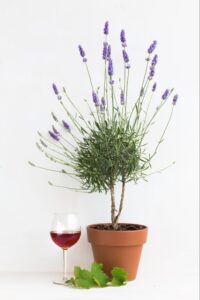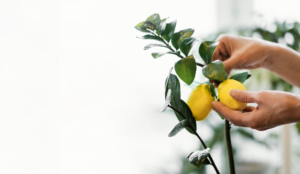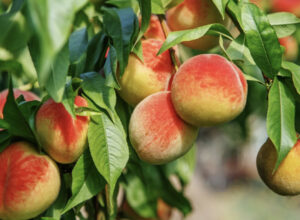How to Care for a Fig Tree: Effective Lifehacks

Understanding the nuances of fig tree care is essential for both budding gardeners and seasoned horticulturists. These trees, with their historical and culinary significance, can be a rewarding addition to any garden. This extensive guide covers everything from the tree’s origin and varieties to advanced care techniques, ensuring your fig tree remains healthy and productive.
History and Significance of Fig Trees
The fig tree, known scientifically as Ficus, is one of the oldest cultivated plants, tracing back its roots to ancient civilizations. Historically, figs were considered a symbol of peace and prosperity. They’re even mentioned in various religious texts, emphasizing their importance throughout the ages.
Fig trees are not just known for their fruits. Their large, lobed leaves have their own significance, often associated with knowledge, enlightenment, and modesty in various cultures.
Fig Tree Varieties and Their Unique Traits
The diversity of fig trees (Ficus species) is impressive, with each variety offering its own unique characteristics, suitable for different climates, uses, and tastes. They differ not only in terms of size, shape, and color but also in their adaptability to specific regions and their resistance to pests and diseases. Here’s a closer look at some of the most popular fig tree varieties and their distinct traits:
‘Black Mission’ Fig:
- Origin: Originally from Spain, it’s one of the most widely grown varieties in the world.
- Appearance: This variety boasts a black-purple skin with a rich pink flesh inside.
- Taste and Use: Revered for its sweet taste and a slightly chewy flesh, it’s perfect for fresh consumption and also makes delicious jams.
‘Adriatic’ Fig:
- Origin: As the name suggests, it’s native to the Adriatic region.
- Appearance: Recognizable by its vibrant green skin and contrasting red flesh.
- Taste and Use: Exceptionally sweet, often used in fig bars and other pastries.
‘Calimyrna’ Fig:
- Origin: A popular choice in California, it owes its lineage to the Turkish ‘Sari Lop’ fig.
- Appearance: Features light green skin with amber flesh inside.
- Taste and Use: Predominantly grown for drying due to its sweet, nutty flavor.
‘Kadota’ Fig:
- Origin: A common cultivar in the USA, believed to have Italian origins.
- Appearance: Offers a thick, creamy amber flesh beneath its light green skin.
- Taste and Use: Often canned or made into fig paste, it possesses a subtle sweetness.
‘Brown Turkey’ Fig:
- Origin: Widely grown in the UK and the USA, it’s ideal for temperate climates.
- Appearance: Features a brownish-dark purple skin with a rich red flesh.
- Taste and Use: Known for its mild sweetness, it’s perfect for jams or eaten fresh.
‘Celeste’ Fig:
- Origin: A favorite in the southeastern United States.
- Appearance: Small with smooth, purplish-blue skin and pale pink flesh.
- Taste and Use: Renowned for its honey-like sweetness and compact size, it’s often eaten fresh or used in desserts.
‘Desert King’ Fig:
- Origin: Well-suited for regions with cooler summers.
- Appearance: Large, green-skinned figs with a rich strawberry-colored pulp.
- Taste and Use: Its juicy interior makes it perfect for fresh consumption.
‘Panachée’ Fig:
- Origin: An eye-catching French variety.
- Appearance: Striking with its green-striped yellow skin and deep red flesh.
- Taste and Use: Offers a juicy burst and intense berry flavor, making it ideal for fresh eating.
In addition to the above, countless local and hybrid varieties cater to specific regional tastes and requirements. When selecting a fig tree, it’s essential to consider the tree’s suitability to your climate, resistance to pests, and intended use of the fruit, be it for fresh consumption, drying, or cooking.
Fig Tree Varieties Comparison Table
| Variety Name | Fruit Color | Preferred Climate | Main Use | Ripening Time |
| Brown Turkey | Dark purple | Warm | Fresh & Jams | Late summer |
| Celeste | Light purple | Cool to Warm | Fresh | Early summer |
| Hardy Chicago | Medium purple | Cool | Preserves | Mid summer |
| King | Bright green | Moderate | Fresh & Dried | Late summer |
| Kadota | Light green | Warm | Canning | Early fall |
This table provides a clear distinction between different fig tree varieties. When considering which variety to plant, this comparative chart can serve as a helpful reference. Each variety has its unique features and preferred conditions, allowing gardeners to make an informed choice based on their climate and intended use of the fruit.
Soil Preparation and Plantation Techniques
Figs are relatively forgiving when it comes to soil types but thrive in well-draining, loamy soil. Before planting, enrich the soil with organic matter like compost or aged manure. This not only provides necessary nutrients but also ensures optimal pH levels.
To check the soil’s drainage, dig a hole about a foot deep, fill it with water, and let it drain. Fill it again. If it takes more than 3 hours to drain the second time, you may need to amend the soil or consider raised beds.
When it comes to planting, dig a hole twice as wide as the root ball and of similar depth. If you’re planting multiple trees, ensure they’re spaced at least 10 feet apart to provide ample space for mature growth.
Advanced Care Techniques for Fig Trees
Caring for fig trees involves more than just basic watering and fertilizing. To truly help your fig tree flourish and bear luscious fruits, advanced care techniques can be adopted. These are particularly beneficial for gardeners aiming for high-quality yields and healthy, long-lived trees. Here’s a deeper dive into advanced care methods:
- Soil pH Monitoring:
Importance: Fig trees prefer slightly acidic to neutral soil (pH 6.0 to 7.5). A correct pH ensures optimal nutrient absorption.
Technique: Use a soil pH tester to regularly monitor the levels. If the soil is too alkaline, consider adding sulfur. If it’s too acidic, lime is beneficial.
- Winter Protection:
Importance: While fig trees are resilient, they can be susceptible to freezing, especially when young.
Technique: In colder zones, wrap the tree trunks with burlap or use specialized tree wraps. Applying a thick layer of straw mulch around the base can also protect the roots from frost.
- Air Layering Propagation:
Importance: This method ensures a higher success rate than cuttings, producing new plants with mature characteristics in a shorter time.
Technique: Make an upward cut about one-third into a healthy branch, prop it open with a toothpick, then wrap it with moist sphagnum moss and plastic. Once roots appear, the branch can be cut off and planted.
- Pruning for Productivity:
Importance: Proper pruning encourages better air circulation, and light penetration, and can increase fruit yield.
Technique: During dormancy, remove any branches that are growing inwards, crossing each other, or appear weak. Maintain an open canopy.
- Fruit Thinning:
Importance: Overcrowding can lead to smaller fruits and increase the risk of fungal diseases.
Technique: In the early fruiting stage, thin out excess figs, ensuring that the remaining fruits have enough space to grow to their full size.
- Beneficial Companion Planting:
Importance: Some plants can deter pests or improve soil health when planted near fig trees.
Technique: Consider planting marigolds or nasturtiums to repel common pests. Legumes can be planted to enhance soil nitrogen levels.
- Drip Irrigation:
Importance: Consistent moisture levels can improve fruit yield and quality.
Technique: Install a drip irrigation system. This ensures water is delivered directly to the roots, reducing water wastage and preventing moisture on the leaves, which can lead to fungal issues.
By integrating these advanced techniques into your care regimen, not only will you be safeguarding your fig tree’s health, but you’ll also be optimizing its productivity and ensuring a bountiful harvest year after year.
How to Care for a Fig Tree Indoors
Indoor fig tree cultivation has gained immense popularity, especially in regions where outdoor conditions aren’t conducive to fig growth. Whether you’re dealing with space constraints or adverse climate conditions, indoor fig tree cultivation can be both feasible and satisfying. Here’s a detailed guide on how to care for a fig tree indoors:
- Pot Selection: Opt for a sizable pot with ample drainage holes. This ensures that excess water doesn’t remain at the bottom, preventing root rot. Initially, you may start with a medium-sized pot, but as the tree grows, be prepared to repot it into a larger vessel.
- Soil Composition: Utilize a well-draining soil mix, rich in organic matter. Combining regular potting soil with perlite or sand can help improve drainage. Periodic addition of organic compost will replenish essential nutrients and maintain soil health.
- Lighting: Fig trees are sun-lovers. Place your indoor fig tree near a south-facing window, where it can receive at least 6–8 hours of sunlight daily. If natural sunlight is insufficient, consider using grow lights.
- Watering: While fig trees need consistent moisture, overwatering can be detrimental. Water when the top inch of soil feels dry to the touch. Using a saucer under the pot can prevent water from spilling and help gauge if the plant is being overwatered.
- Fertilization: During the growing season (spring and summer), feed your indoor fig tree with a balanced liquid fertilizer once a month. Reduce feeding in the dormant winter months.
- Pruning and Shaping: Regularly inspect your tree for dead or yellowing leaves and remove them. Annual pruning helps maintain the tree’s shape and size, making it manageable indoors. Prune during the dormant season.
- Humidity: Indoor environments, especially during winter, can be dry. Fig trees appreciate humidity. Place a humidifier nearby, or set the pot on a tray filled with pebbles and water to increase ambient humidity.
- Winter Care: Even indoor fig trees experience some dormancy in winter. Reduce watering and hold off on fertilizing. If the tree is near a window, ensure it’s not exposed to cold drafts.
- Pests and Diseases: Watch for signs of common indoor plant pests like spider mites, aphids, or mealybugs. If detected, use insecticidal soap or neem oil as a safe treatment. Ensure good air circulation to prevent fungal diseases.
- Harvesting: Even indoors, fig trees can produce a rewarding harvest. Wait for the figs to fully ripen, turning soft and changing color, before plucking.
Indoor fig tree cultivation offers the joy of fresh figs without the constraints of outdoor gardening. With attention to its specific needs and regular care, your indoor fig tree can thrive and become a centerpiece in your living space.
Potential Pests and Diseases Affecting Fig Trees
Fig trees, though relatively hardy, are not exempt from the challenges posed by pests and diseases. A vigilant gardener can often prevent or mitigate these issues. Here’s a comprehensive insight into potential threats and their management:
- Fig Rust:
- Symptoms: Yellow-brown leaves with tiny, raised spots; premature leaf drop.
- Management: Remove and dispose of infected leaves. Use a fungicide specifically designed for fig rust. Ensure proper air circulation around the tree.
- Root-knot Nematodes:
- Symptoms: Swellings or knots on roots; stunted growth; yellowing leaves.
- Management: Solarize the soil before planting by covering it with clear plastic during the hottest months. This heats the soil, killing the nematodes. Also, consider planting marigolds around fig trees, as they act as a natural repellent.
- Fig Mosaic Virus:
- Symptoms: Mottled, yellow-green leaves; reduced fruit quality.
- Management: There’s no cure for this virus, but its impact can be minimal if the tree is kept healthy. Ensure proper watering, fertilization, and pruning.
- Fig Borers:
- Symptoms: Wilting branches; exit holes in the trunk or branches; sawdust-like frass.
- Management: Prune and destroy infested branches. Apply an insecticide to the tree trunk to prevent adult borers from laying eggs.
- Aphids:
- Symptoms: Misshapen or yellowing leaves; a sticky substance (honeydew) on the leaves or ground.
- Management: Release beneficial insects like ladybugs and lacewings. If the infestation is severe, use insecticidal soap or neem oil.
- Scale Insects:
- Symptoms: Small, round, and flat disc-like insects on the underside of leaves and on stems; honeydew and sooty mold.
- Management: Introduce beneficial insects such as ladybugs. For heavy infestations, apply horticultural oil or insecticidal soap.
- Leaf Miners:
- Symptoms: White or yellow squiggly lines on leaves.
- Management: Remove and discard damaged leaves. Use yellow sticky traps to catch adult flies. Neem oil can also deter these pests.
- Verticillium Wilt:
- Symptoms: Yellowing and wilting of leaves on one or more branches; stunted growth.
- Management: Remove affected plants and replace the soil before replanting. Ensure crop rotation if fig trees are part of a larger orchard.
Regular inspections, proper sanitation, and balanced care of fig trees are crucial. Understanding the specific signs of these pests and diseases will allow for early detection and efficient management, ensuring the health and productivity of your fig tree.

Culinary Uses of Figs
Figs are a culinary delight. Fresh figs can be added to salads or used in desserts. They can be made into jams, preserved in syrups, or dried for prolonged storage. Their sweet, sticky nature makes them perfect for baking and cooking, adding a burst of flavor to various dishes.
Conclusion
Cultivating fig trees can be a rewarding endeavor, providing both aesthetic pleasure and a delicious harvest. The vast array of fig tree varieties offers options for nearly every climate and purpose, whether you’re looking for a fresh fruit source or seeking ornamental value. As highlighted throughout the article, understanding the specific requirements of each variety, from planting to harvest, is crucial. By offering the necessary care, fig trees can thrive and produce abundant fruit, adding value to gardens and homes alike. The insights provided within this comprehensive guide serve as a foundation for both novice gardeners and seasoned horticulturists, ensuring successful fig cultivation.
FAQ
1. How often should I water my fig tree?
Young fig trees should be watered regularly until established. In dry climates, deep water at least once a week. Mature trees require less frequent watering.
2. When is the best time to harvest figs?
Figs should be harvested when they are fully colored and slightly soft to the touch.
3. Can fig trees grow indoors?
Yes, especially certain varieties. It’s crucial to ensure adequate sunlight and regular care for indoor fig trees.
4. What type of soil is best for fig trees?
Figs thrive in well-draining soil rich in organic material. Soil pH should ideally be between 6.0 and 7.5.
5. Why are the leaves on my fig tree turning yellow and dropping?
This could be due to various reasons, including overwatering, under-watering, or a pest infestation. It’s essential to diagnose the specific cause and address it.




